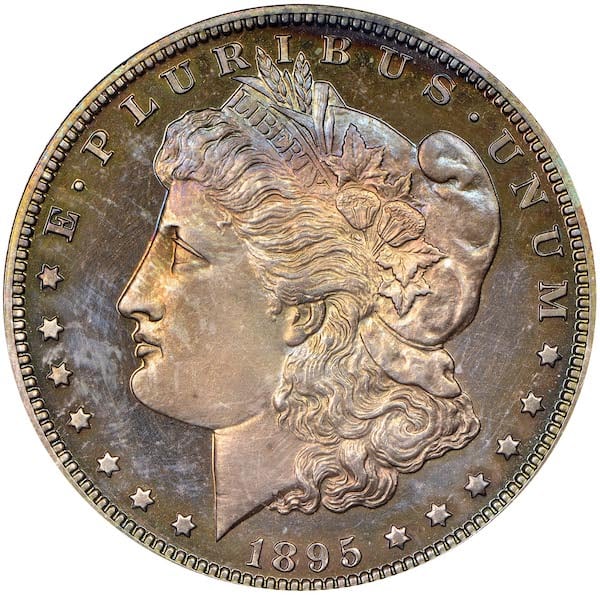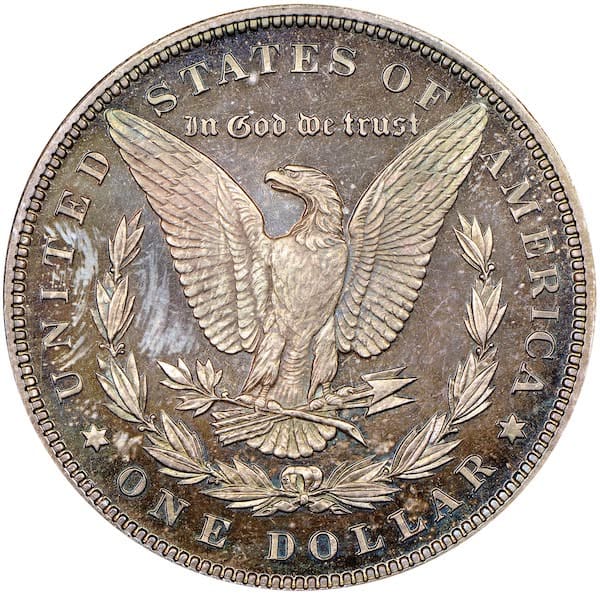Over the centuries, numismatists – people who collect coins, tokens, paper money and related objects – have scoured the globe for hidden treasure. Among these enthusiasts have been Roman emperors, European nobility and America’s industrial giants. Although it’s known as the “hobby of kings,” coin collecting is no longer just a pastime for royalty. In our current age of international Internet trading, it is possible for almost anyone to begin a collection.
One of the most sought-after coins, for the novice and experienced collector alike, is the Morgan silver dollar. Originally minted in Philadelphia, it served as our nation’s silver dollar from 1878 through 1904, with a final limited mintage in 1921. It is one of the most easily recognizable coins and holds significance for both collectors and average Americans, who may actually remember carrying the coin as legal tender.

In 1876 Henry Linderman, director of the U.S. Mint, was charged with the task of producing a silver dollar to replace the existing trade dollars. A design submitted by George Morgan, a young, newly employed British engraver, was chosen.
The obverse side of the coin, depicting Lady Liberty, was modeled after Anna W. Williams, an 18-year-old Philadelphia schoolteacher. Reluctant to model for the image, fearing she might lose her job, Williams adamantly insisted her identity be kept secret. But within a year, it was revealed. This resulted in her being recognized as “Lady Liberty” throughout her lifetime.
On the coin, Liberty wears a cap bearing the word “Liberty” and adorned with two heads of wheat and two cotton blossoms, symbolic of America’s agricultural heritage. Signing his intricate design, Morgan engraved an “M” by the last curl at the base of Liberty’s neck.
The reverse of the coin depicts a slender eagle with outstretched wings holding an olive branch and arrows in its talons. Beneath the eagle is a laurel wreath with a bow. On the left loop of the bow, Morgan again placed his signature, “M.” Mint marks, when present, are located below the wreath. With the design complete, history records that on March 11, 1878, the Morgan silver dollar first went into production at the Philadelphia Mint. The coins were initially struck with eight tail feathers, but the design was corrected within the first year to show only seven. To this day, coins with both images still exist.
With over 657 million Morgan silver dollars minted, exhibiting 96 date and mint mark combinations, it is no wonder that the “Morgan” is heralded as one of the most collectible coins in America. However in 1918, the Pittman Act authorized the melting of 270 million Morgans in order to acquire silver bullion for paying U.S. war debts. This action drastically reduced the number of these coins available to today’s collectors.

Without question the most coveted Morgan is the 1895 issue, known as “the king of the Morgans.” A curious mystery regarding this rare coin persists to this day, as numismatists continue to wonder what happened to the original mintage. It seems the U.S. Mint ledgers recorded that 12,000 business-strike coins (for general circulation rather than collectors) with no mint mark were struck in 1895. But no one ever saw the listed coins. Theorists speculate that the records were wrong and the coins were never struck or that they were somehow lost at sea or that they succumbed to a meltdown. Whatever the case, the only survivors of that mintage were 800 proof coins (high-quality strikes), highly prized for their rarity. These coins may sell individually in the tens of thousands of dollars. To date the highest price paid for an 1895 Morgan proof was $199,750 at Heritage Auctions in Chicago in 2017.
When it comes to authenticating and evaluating these proof dollars, the Numismatic Guaranty Corporation (NGC) of Sarasota, Florida, has that distinct privilege. Max Spiegel, senior vice president of sales & marketing proudly affirms that since their company’s founding in 1987, they have graded over 43 million coins, among them some 373 examples of the rare 1895 proofs. For an informative article on a forgery of this coveted coin, visit www.ngccoin.com and click on the “News” category. Then drop down to “All News,” and under “Counterfeit Detection,” look for the article on the 1895 Morgan.
“One reason the Morgan Silver Dollar, in particular, is so popular is that it conjures up romantic images of the Old West, when our nation was young,” says Spiegel. “In addition, these coins are still available and relatively affordable for most every budget.”
If the “hobby of kings” sounds intriguing to you, purchase a copy of The Official Red Book: A Guide Book of United States Coins 2019 by R.S. Yeoman for help in evaluating your finds. And then, let the games begin. Happy Hunting.
